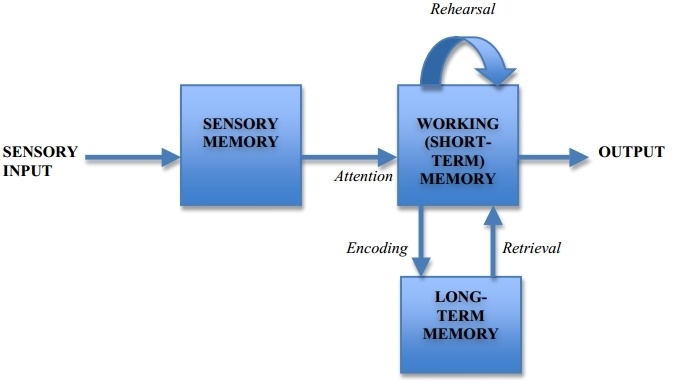Information Processing Theory
Throughout much of the 1950s psychologists involved in the Information Processing movement began to view the brain as a neural computer that processes information with extraordinary efficiency and excellent performance in problem solving and critical thinking, through a process increasingly enhanced over time.The idea of Information Processing lies within Cognitive Psychology - I highly encourage you to check Cognitive Load Theory and Instructional Design - and as a theory combines multiple theoretical perspectives that mainly seek to explain human learning as the development of networked memory structures.
The 3 Main Functions of Information Processing
The Information Processing Model consists of three key functions:
- Sensory memory
- Working memory
- Long-term memory
Sensory memory helps people screen incoming information. Working memory helps people manage and store larger chunks of information, and perform visual-spatial mental operations. Long-term memory serves as a permanent repository, holding all sorts of information that can be accessed at a later time, enabling humans to continually build upon their knowledge base.
The 3 Principles of the Information Processing Theory
The Information Processing Theory and Instructional Model rely on three key principles:
- The information provided by our environment is constantly processed by a complex series of systems.
- The processing systems modify the information we gather in “systematic” ways.
- The primary goal of research tasks that delve into information processing is to determine which processes and brain structures are behind cognitive performance.
Applications of Information Processing in Learning
In a learning environment, there are a number of ways in which Information Processing can be applied. In a classroom setting, learners are continually learning and utilizing memory processes in order to store the information being provided by the instructor. They are also actively retrieving the information required for the lesson. From an instructor’s standpoint, Information Processing is used to help learners to further enhance their respective skills and understand the curriculum presented.A great way for teachers and instructors to practice the information processing skills of their learners is to test their focusing, information gathering, remembering, and organizing skills.
- Focusing skills involve the determination of a situation and the establishment of the appropriate ways to address it.
- Information gathering skills involve the collection of information around the situation and the formulation of questions that will clarify it.
- Remembering skills involve encoding and recalling, which are both directly linked to mnemonics.
- Organizing skills include comparisons, categorization, sequencing and visual, verbal or symbolic representations.
Implement the most Impactful Instructional Design Theories with the Best Authoring Tool!Discover, choose and compare the top eLearning Authoring Tools Providers!
Join us at the Instructional Design History Journey
A New Instructional Design Model Will Be Added Every Week! You are more than welcome to let us know if you would like us to cover an instructional design model and theory that is not included at Instructional Design Models and Theories. Simply leave a comment at Instructional Design Models and Theories.Last but not least, you are more than welcome to embed the Information Processing Theory presentation at your site of blog. If you have a question that needs an answer concerning the Schema Theory do not hesitate to leave a comment and I will reply you as soon as possible.References:
- Information Processing Theory
- Cognitive Approaches to Learning
- Information Processing
- Cognitive Information Processing Theory
- Wikipedia: The Free Encycopedia. Information Processing Theory. Retrieved September 29, 2013, from https://en.wikipedia.org/wiki/Information_processing_theory

